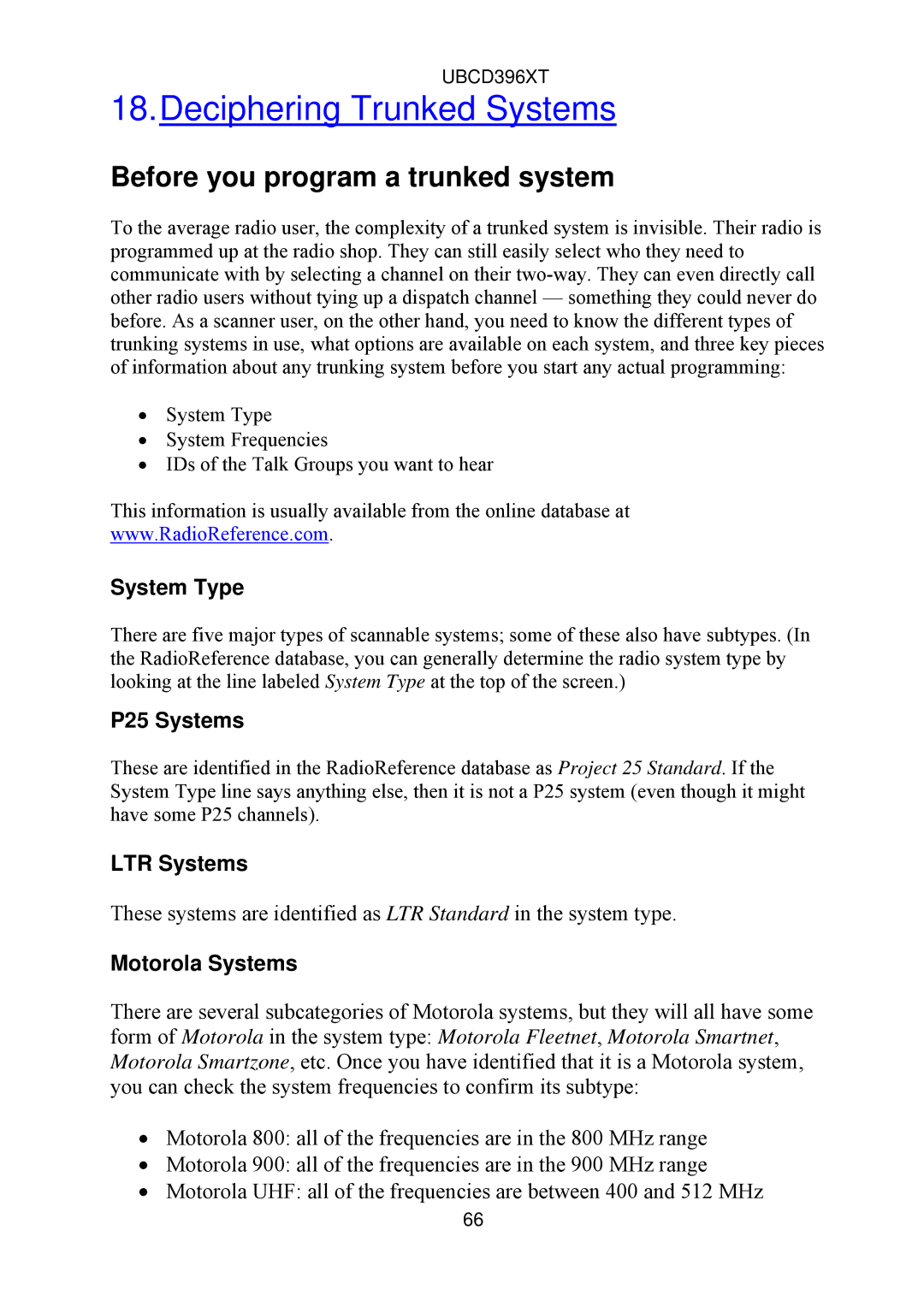UBCD396XT
18.Deciphering Trunked Systems
Before you program a trunked system
To the average radio user, the complexity of a trunked system is invisible. Their radio is programmed up at the radio shop. They can still easily select who they need to communicate with by selecting a channel on their
∙System Type
∙System Frequencies
∙IDs of the Talk Groups you want to hear
This information is usually available from the online database at
www.RadioReference.com.
System Type
There are five major types of scannable systems; some of these also have subtypes. (In the RadioReference database, you can generally determine the radio system type by looking at the line labeled System Type at the top of the screen.)
P25 Systems
These are identified in the RadioReference database as Project 25 Standard. If the System Type line says anything else, then it is not a P25 system (even though it might have some P25 channels).
LTR Systems
These systems are identified as LTR Standard in the system type.
Motorola Systems
There are several subcategories of Motorola systems, but they will all have some form of Motorola in the system type: Motorola Fleetnet, Motorola Smartnet, Motorola Smartzone, etc. Once you have identified that it is a Motorola system, you can check the system frequencies to confirm its subtype:
∙Motorola 800: all of the frequencies are in the 800 MHz range
∙Motorola 900: all of the frequencies are in the 900 MHz range
∙Motorola UHF: all of the frequencies are between 400 and 512 MHz
66
